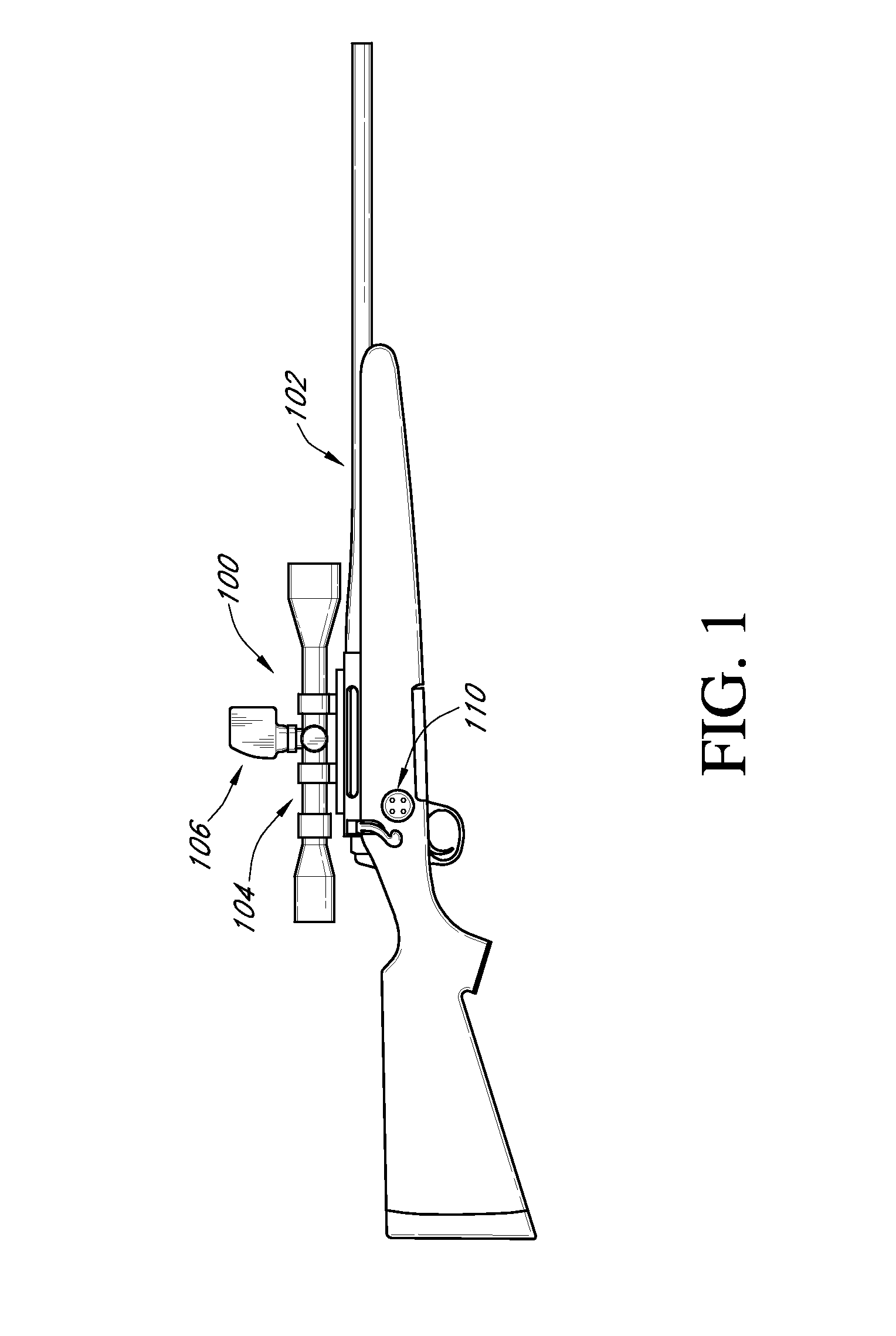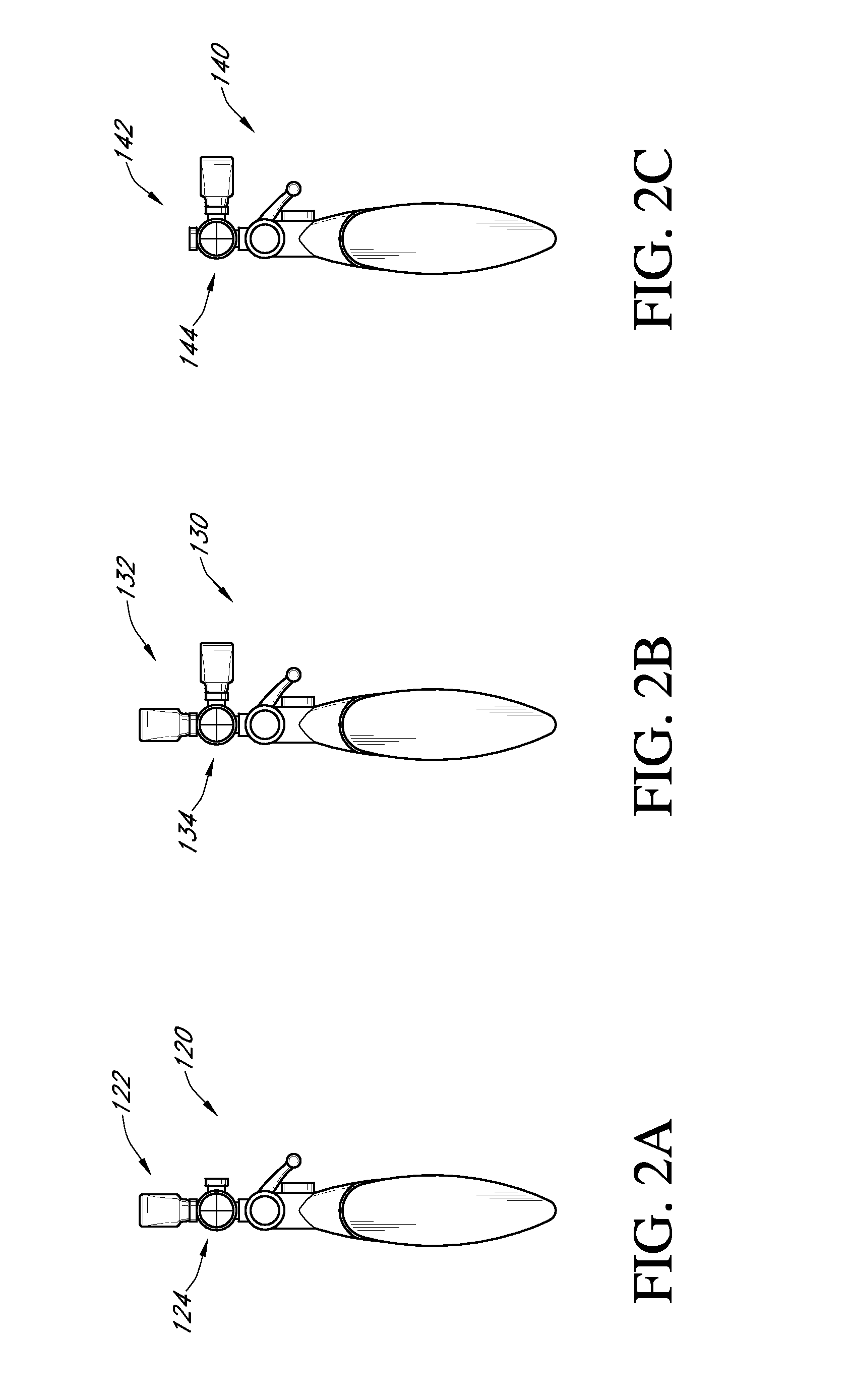Projectile sighting and launching control system
a projectile and control system technology, applied in the field of projectile sighting and launching control systems, can solve the problems of increased difficulty in sighting in the firearm, potential errors in the sighting of the firearm, and subsequent shots at targets at non-zero distances
- Summary
- Abstract
- Description
- Claims
- Application Information
AI Technical Summary
Benefits of technology
Problems solved by technology
Method used
Image
Examples
embodiment 174
[0131]In the embodiment 174 of the adjustment mechanism, the motor 210 is powered by a battery. The motor 210 rotates in response to a motor signal from a control unit 216 that results from a signal from the remote controller (not shown). A housing 214 houses the battery 212, motor 210, control unit 216, and the driver member 200.
[0132]It should be apparent that the motor 210 and the battery 212 can be selected from a wide variety of possible types, depending on the performance criteria. It will be appreciated that the motor 210 may be powered by a power source other than a battery without departing from the spirit of the present teachings. For example, the adjustment mechanism may be adapted to be powered by an external source, such as a battery adapter.
[0133]It will also be appreciated that the adjustment mechanism may be adapted to couple (e.g., retrofit) to numerous other types of scopes. For example, some scopes may have knobs (instead of slots) for turning the threaded actuato...
embodiment 224
[0140]In FIG. 7, the adjustment mechanism 224 is shown to be coupled via the coupling 230. The internal components within the transfer mechanism 242 and the coupling 230 are described below in greater detail. The transfer of the X-motion to the Y-motion allows moving of an adjustment tube 240 with respect to the scope tube 226 in a manner described below. In the embodiment 224 shown in FIG. 7, the battery 250, motor 252, and the transfer mechanism housing are enclosed within an outer housing 256.
[0141]FIG. 8 now illustrates a partially disassembled view of the transfer mechanism 242. The mechanism 242 comprises a housing 262 having an input portion 264 and an output portion 266. The input portion 264 is adapted to receive a bolt 270. In one embodiment, the bolt 270 comprises an elongate member having a threaded portion 272, an engagement surface 274, and a smooth portion 276 there between. The threaded portion 272 is adapted to engage its counterpart threads (shown in FIGS. 9 and 10...
embodiment 440
[0245]In another embodiment 440 shown in FIG. 15B, a rangefinder is integrated into a scope such that a POAC 444 of the sight picture 442 indicates the ranging point on a target 426. A range 446 thus obtained is provided to the processor.
[0246]In yet another embodiment 450 shown in FIG. 15C, range 446, wind velocity 447 and wind direction 448 information may be input into the processor as well as digitally displayed in the sighting system's field of view 442. The wind velocity 447 and wind direction data information 448 may be automatically transmitted to the processor from a built-in wind detector or via wireless link from a remote sensor (e.g., FIG. 25 set-up in a remote location FIG. 26). In both cases, the wind data can be transmitted to the processor so that the processor can then determine the amount of adjustment to be made to the horizontal (windage) mechanism such that the POAC will coincide with the calculated POIC, and a digital display of the wind information can be view...
PUM
 Login to View More
Login to View More Abstract
Description
Claims
Application Information
 Login to View More
Login to View More - R&D
- Intellectual Property
- Life Sciences
- Materials
- Tech Scout
- Unparalleled Data Quality
- Higher Quality Content
- 60% Fewer Hallucinations
Browse by: Latest US Patents, China's latest patents, Technical Efficacy Thesaurus, Application Domain, Technology Topic, Popular Technical Reports.
© 2025 PatSnap. All rights reserved.Legal|Privacy policy|Modern Slavery Act Transparency Statement|Sitemap|About US| Contact US: help@patsnap.com



